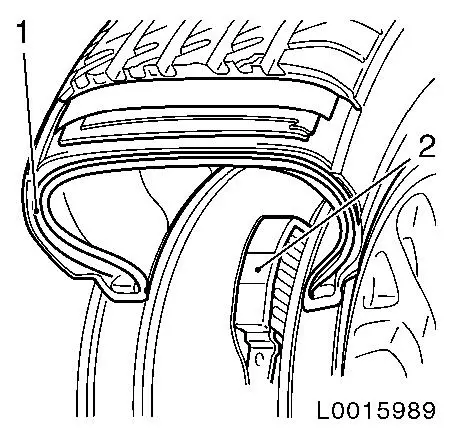Astra J
|
RunFlat tyres Some model ranges can optionally be fitted with run-flat tyres. Run-flat tyres do not have any disadvantages over conventional tyres in terms of driving dynamics, but their reinforced side walls only allow restricted driving in the event of a puncture. As the steering capacity and driving behaviour of the vehicle change when the tyre loses pressure, the driving style and speed must be adapted to the modified conditions. The design of the tyres means that a pressure loss may go unnoticed under certain circumstances, so the following vehicle systems must be present for the use of run-flat tyres:
With no pressure in the tyre, driving may continue at max. 80 km/h for a distance of up to 80 km. Run-flat tyres, depending on manufacturer, can be identified by the marking on the tyre wall (e.g. ROF = RunonFlat for Goodyear, or SSR = Self Supporting Runflat Tyre for Continental), and may only used in combination with alloy wheels approved by Opel; this also applies to winter tyres. In service, they may be mounted with conventional tyre fitting machines. Notes on Use of Run-flat Tyres
|
||||||||||

